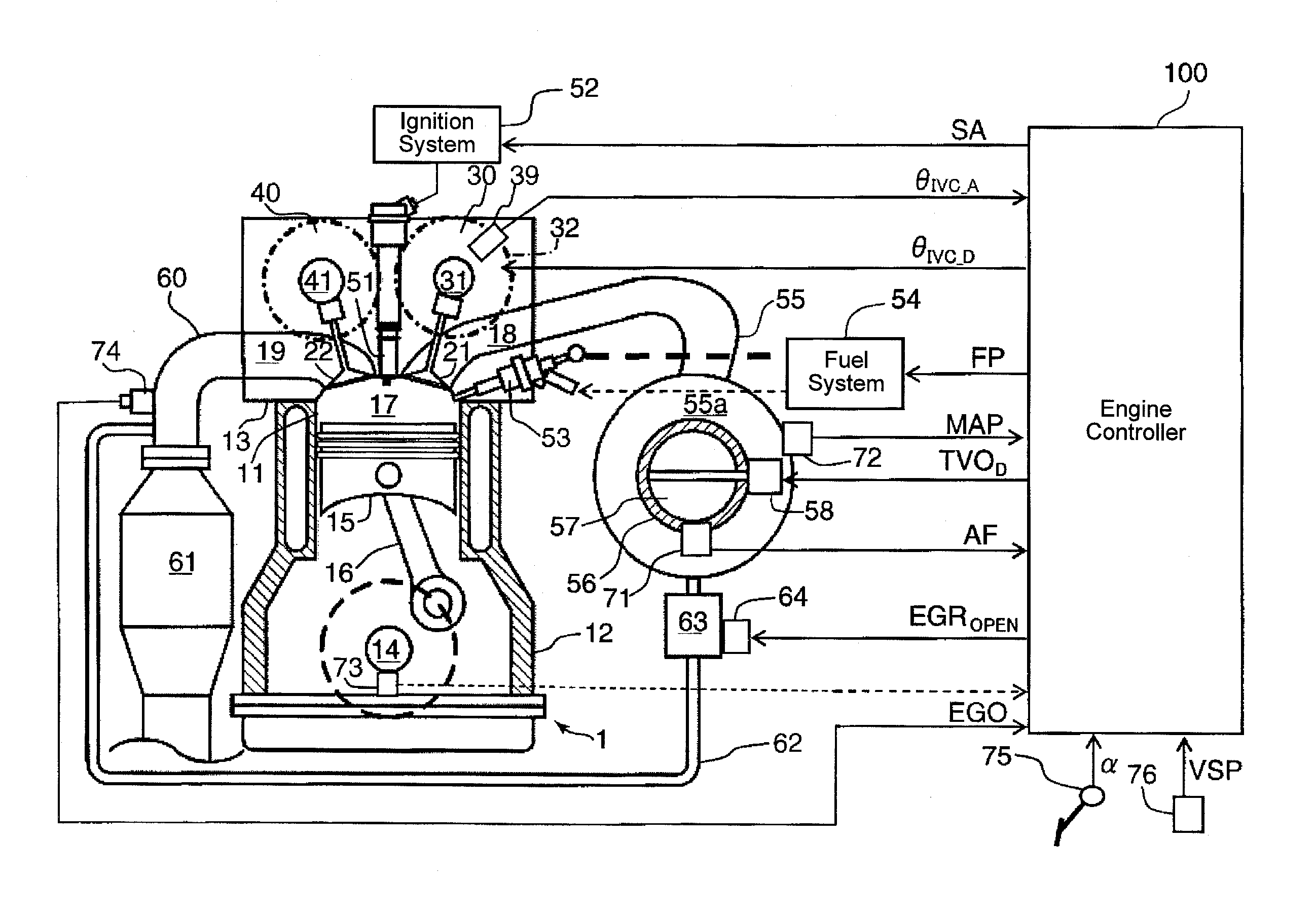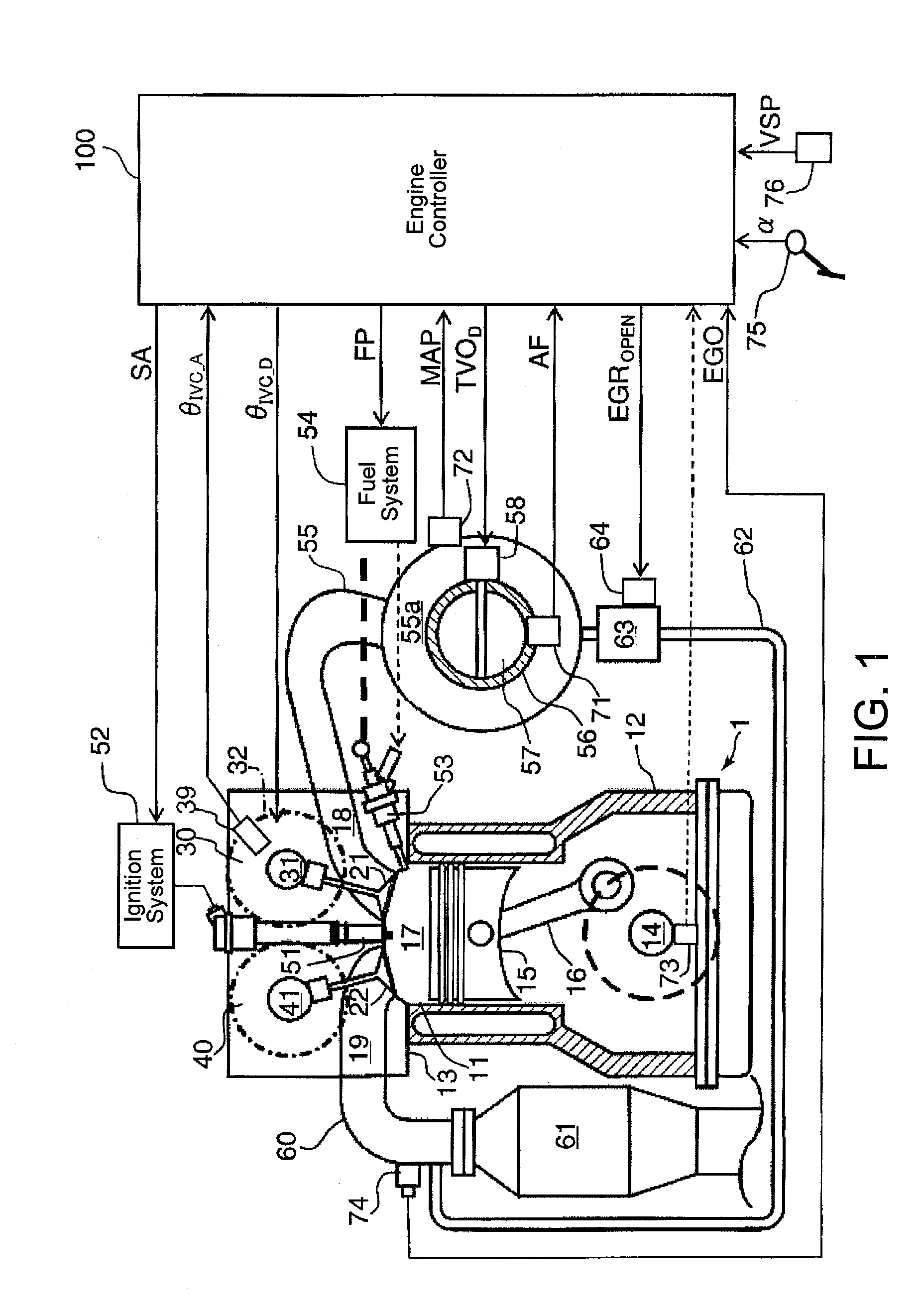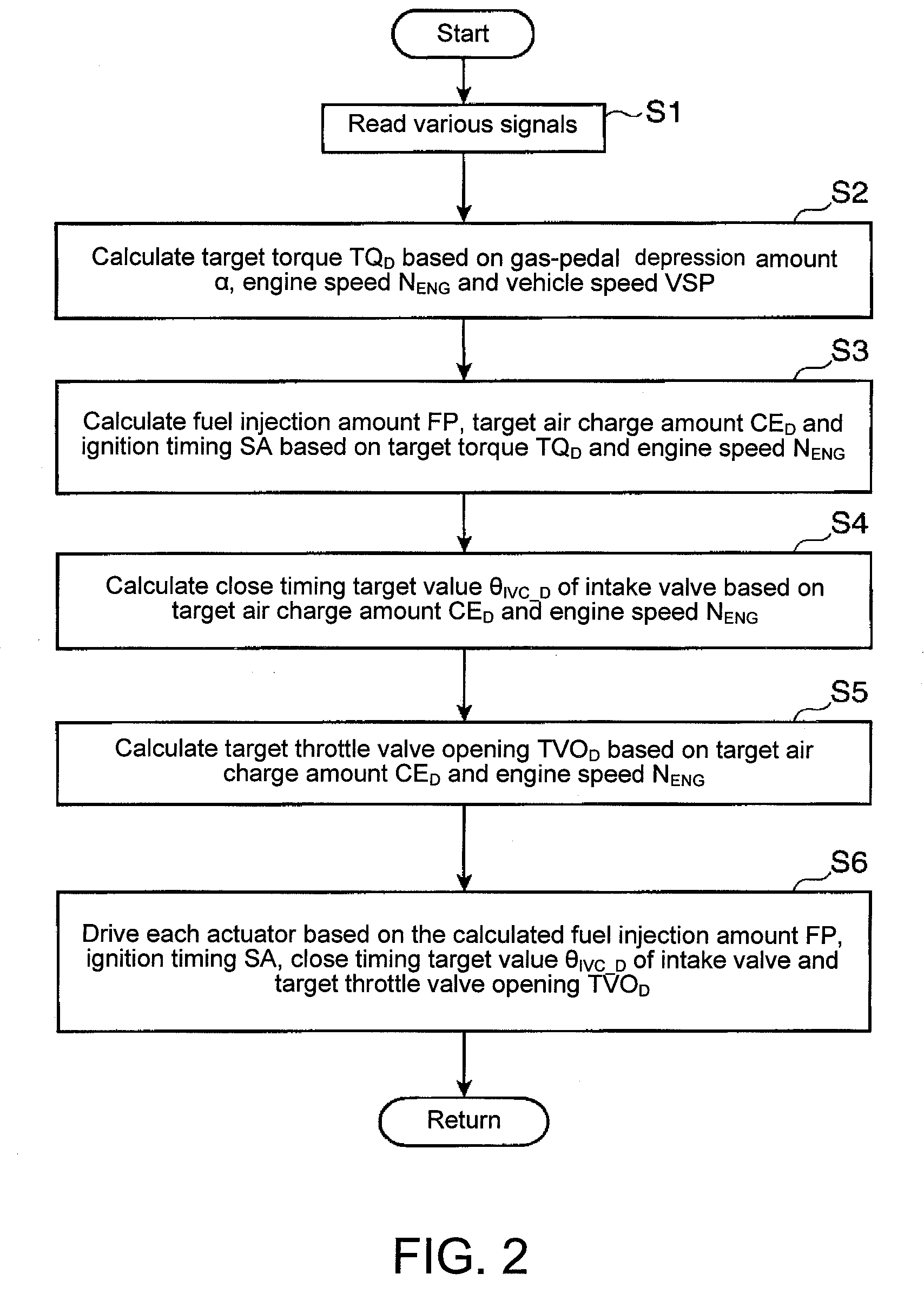Method and system for controlling an internal combustion engine
a technology of internal combustion engine and expansion ratio, which is applied in the direction of electrical control, process and machine control, etc., can solve the problems of increased expansion ratio of internal combustion engine in order to further improve operating efficiency and output, abnormal combustion, and decreased possibility of abnormal combustion in the operation range with higher engine speed than the above-described low engine speed range, so as to improve engine operating efficiency and improve emission characteristics , the effect of reducing the amount of cylinder air charg
- Summary
- Abstract
- Description
- Claims
- Application Information
AI Technical Summary
Benefits of technology
Problems solved by technology
Method used
Image
Examples
second embodiment
[0085]Further, specific values of the closing timing IVC of the intake valve 21, the reference air charge amount, the engine speed N1, N2 and N3, and the like are not limited to those described above. Next, the invention is described with reference to the drawings.
[0086]In the second embodiment, in addition to the control of the closing timing of the intake valve 21 in the above described embodiment, the opening timing of the intake valve 21 and the closing timing of the exhaust valve 22 are controlled. An outline of the second embodiment is such that when the target air charge amount CED is the maximum and the engine speed NENG is N5 or less, the opening timing of the intake valve 21 is controlled to be advanced, and the closing timing of the exhaust valve 22 in the cylinder 11 is controlled to be retarded as the engine speed NENG increases. Further, when the engine speed NENG is smaller than a predetermined speed N4 or less which is smaller than N5, the exhaust valve 22 is control...
third embodiment
[0116]Furthermore, the intake valve 21 and the exhaust valve 22 may be controlled to have no negative overlap period at the full load condition over the entire engine speed range. Such control is applied on a third embodiment that will be described now.
[0117]The third embodiment has the engine system described above with reference to FIG. 1. The control procedure executed by the engine controller 100 is same as described above in terms of the second embodiment with reference to the flowchart in FIG. 8.
[0118]The engine controller 100 controls angular phases of the intake camshaft 31 and the exhaust camshaft 41 relative to the crankshaft 14 and the throttle valve opening as shown in FIGS. 14 through 16. As an example, the opening duration of the intake valve 21 is a constant of 250° CA, and the opening duration of the exhaust valve 22 is a constant of 225° CA.
[0119]As shown in FIG. 14, in an engine operating range where the engine speed NENG is between N11 (for example, an idle speed ...
first embodiment
[0121]But, in both of the above operating ranges (e.g., N11-N12 and N12-N13), when the target air charge amount CED is greater than a CED—base (which may be the same as in the first embodiment), the angular phase of the intake camshaft 31 is advanced and the angular phase of the exhaust camshaft 41 is retarded as the target air charge amount CED increases. However, in this operating range, the throttle valve opening TVO is constant regardless the variation of the target air charge amount CED, as shown in FIG. 15.
[0122]Referring back to FIG. 14, on the other hand, when the target air charge amount CED is the CED—base or less, the angular phase of the intake camshaft 31 and the angular phase of the exhaust camshaft 41 of the exhaust valve 22 are constant regardless the variations of the target air charge amount CED and the engine speed NENG. However, in this operating range, the throttle valve opening TVO increases as the target air charge amount CED increases as shown in FIG. 15.
[012...
PUM
 Login to View More
Login to View More Abstract
Description
Claims
Application Information
 Login to View More
Login to View More - R&D
- Intellectual Property
- Life Sciences
- Materials
- Tech Scout
- Unparalleled Data Quality
- Higher Quality Content
- 60% Fewer Hallucinations
Browse by: Latest US Patents, China's latest patents, Technical Efficacy Thesaurus, Application Domain, Technology Topic, Popular Technical Reports.
© 2025 PatSnap. All rights reserved.Legal|Privacy policy|Modern Slavery Act Transparency Statement|Sitemap|About US| Contact US: help@patsnap.com



